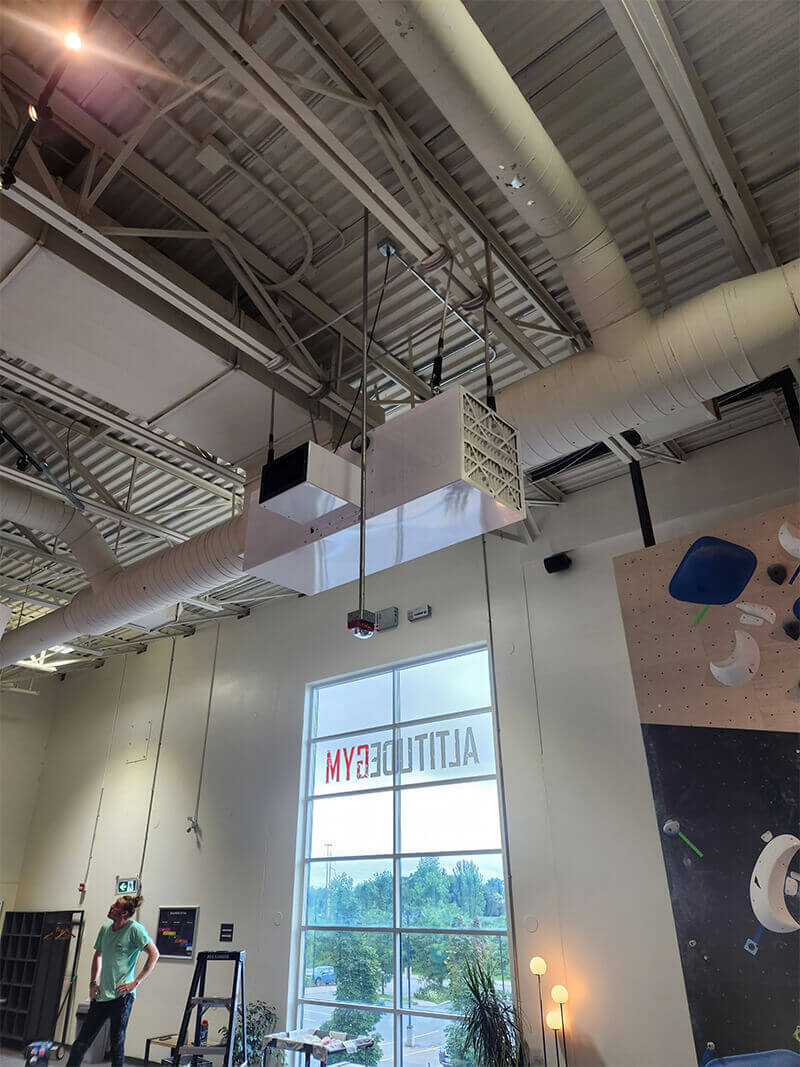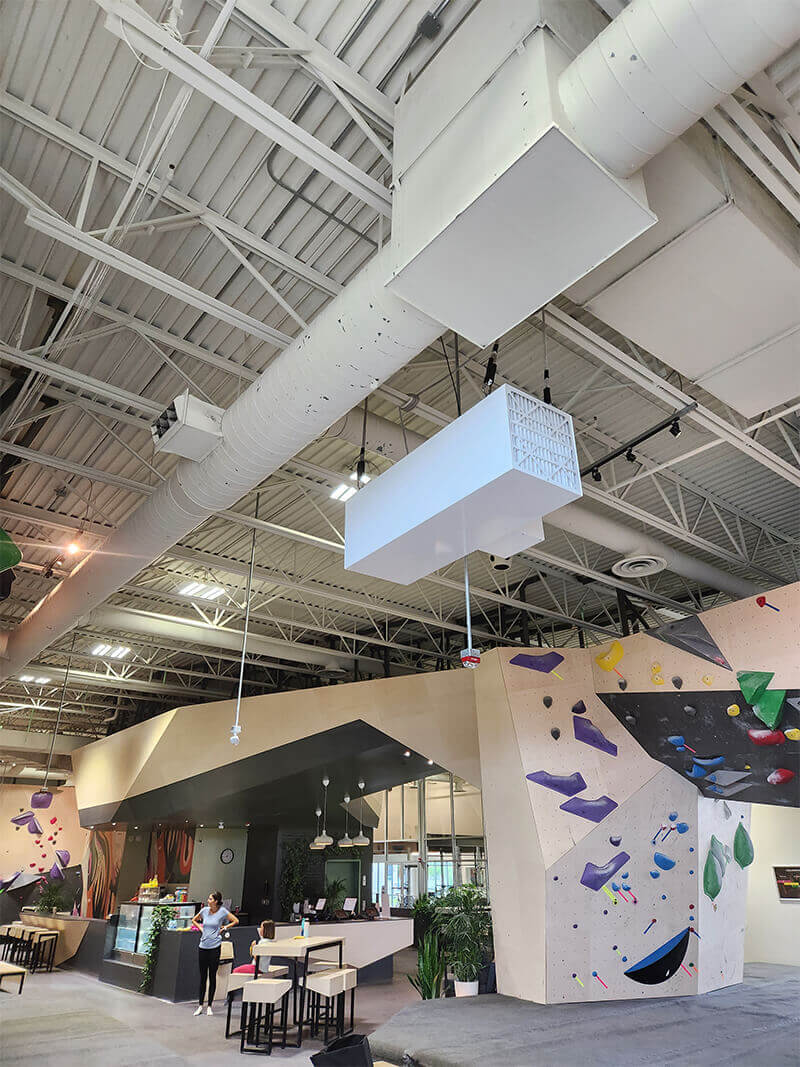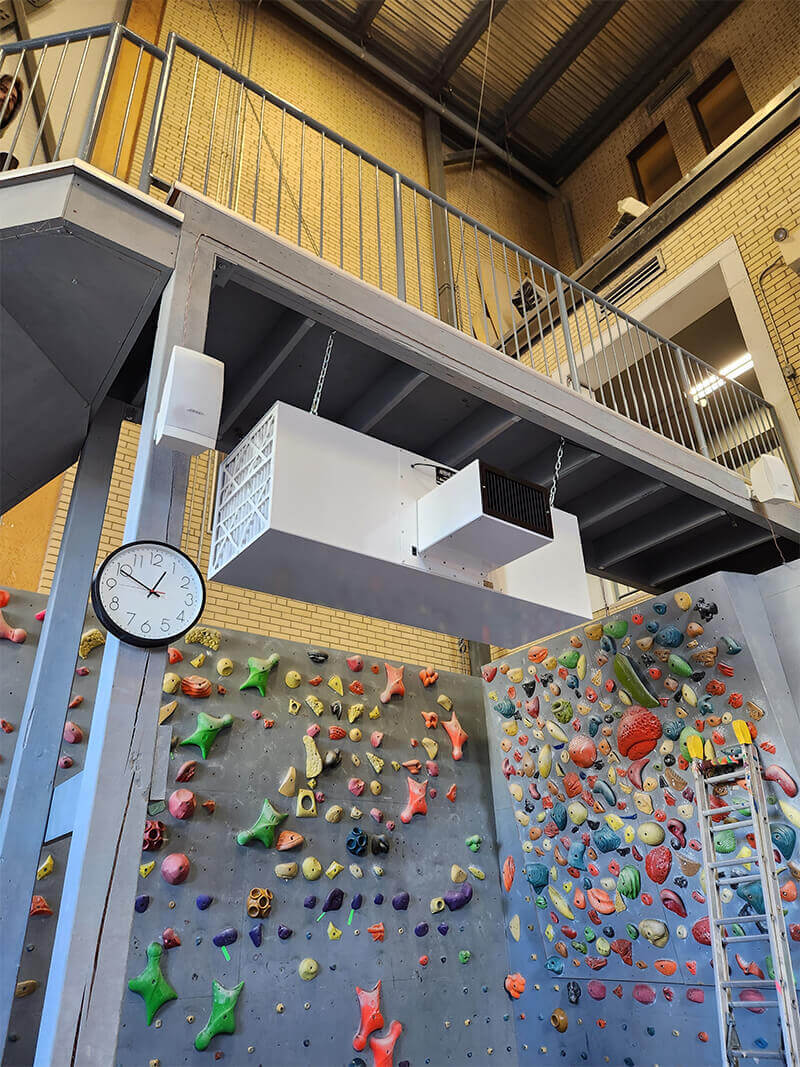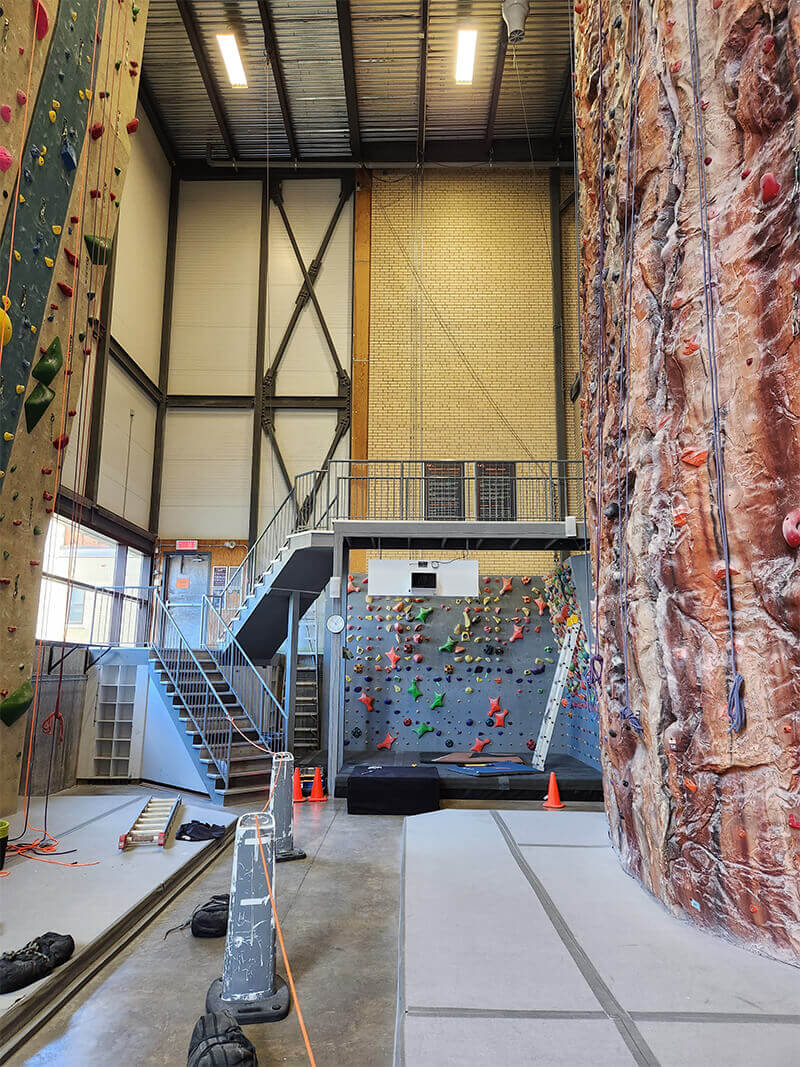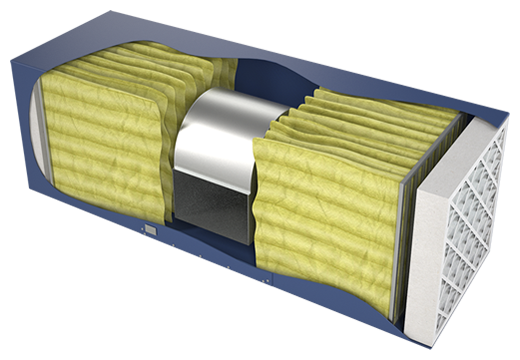
Climbing Gym Air Filtration
Blue Ox OX3000 units were installed at a climbing gym to filter chalk dust and other air contaminants.
By drawing air through a series of filter stages, Blue Ox OX3000 air filtration systems reduce 95% of contaminants by exchanging the air in a room eight times per hour to efficiently capture and control the chalk dust, mold, mildew, and other air pollutants found in climbing gyms.
With a dual set of micro-glass disposable filters, OX3000 units provide more filter area and operate with less static pressure. The lower airflow-to-filter ratio ensures higher efficiency and longer life.
✓ 3,000 CFM
✓ 3/4 H.P. Direct Drive Fan
✓ Warranty: 3 years on all parts (excludes filters)
Application: Climbing Gym
Altitude Gym, Orleans, ON
Rock climbing gyms often use air filtration systems to help improve the air quality and reduce the amount of dust and particulate matter in the air. Climbing gyms can be especially prone to airborne particulates due to the use of chalk and the constant movement of climbers on the walls. Because climbing gyms are exclusively indoor spaces, there are a range of factors that impact the overall air quality — including chalk dust but also mold and mildew, chemical exposure, and outdoor pollution.
To minimize these risks, rock climbing gyms must reduce the amount of chalk dust, bacteria, mold, chemical fumes, and outdoor pollution in the airstream by implementing air filtration. Climbing gym air filtration systems are equipped with a large centrifugal-type blower and specialized filter media that work together to remove particulate matter, allergens, and other pollutants from the air to circulate clean air and improve air quality.
Maintaining high-quality air in climbing gyms is vital for the health, safety, comfort, and performance of climbers and gym staff. OX3000 air filtration systems from Blue Ox help climbing gyms establish the air quality needed to create clean indoor environments and minimize the risk of health and safety injuries among climbers and gym staff.
Copyright © 2025 | Blue Ox Air Cleaners. A division of Air Cleaning Specialists, Inc.

